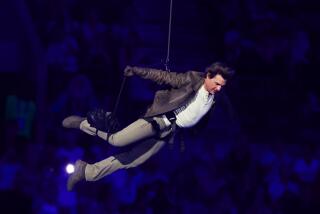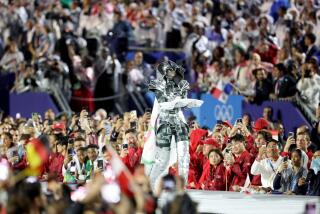Flights of Fancy and Fancy Flights
I sat in the right-hand seat, six feet behind the idling propeller.
“What do you know about flying?” Hank asked.
“Oh, I already know how to fly,” I said.
“You know?”
“Sure. You sit down in your seat, right?”
“Right.”
“The plane goes shooting down the runway. You pull up on the armrests and she flies. Of course, everybody has to do it at the same time.”
“Gee,” said Hank, “I didn’t think you really knew.”
That was the start of my flying lessons.
I was never a hot-shot pilot. “Average” would about fit, but ever since learning to fly, I’ve tried to “wish” myself into the captain’s seat on every commercial flight I’ve taken.
Over Hudson Bay or the Irish Sea or the Grand Canyon or the Alps, I’d always have the secret opinion that I could fly the airplane better than the man who was doing it. Pure poppycock, of course. If I actually found myself in the pilot’s seat of a 747, I’d probably have a heart attack. But the feeling is always there.
Very likely, it’s that same feeling that made me want to go to Abbotsford, British Columbia, Canada.
Easiest Part
My wife and I had business in Vancouver. Since it was nothing too pressing, and knowing that one of the world’s great air shows takes place in Abbotsford, it was easy for me to make the trip coincide with the show.
I figured it might be kind of hard talking Joyce into it, so I worked on my arguments.
I might be able to get an article out of it, I’d tell her. Would she buy that?
“Joyce, as a former flier . . ., “ I’d start, but she would only counter with a bald-faced truth.
“You haven’t flown an airplane in 30 years,” she would say.
With very little hope, I broached the subject.
“Look, honey, as long as we’re going to Vancouver, there’s this air show over in Abbotsford.”
“Do you think I should wear my slacks, or would culottes be better?”
“Wait a minute, this is one of the world’s truly great air shows and . . . . “
“Actually,” she said, “the blue skirt wouldn’t be bad, with maybe one of my pink polo shirts.”
“Huh?” I said.
“Those little glasses of yours won’t do it. I’m going to have to borrow Mel and Annette’s field glasses. And their camera. Don’t you think I ought to get their camera, too? We need a backup. We could get an article out of this, you know.”
We booked a Canadian Airlines flight. As the big red and white plane shot down the runway, we all lifted up on our armrests and before you knew it, we were in the air.
Torn-Up Mountain
Later, while I was wondering what the first-class passengers might be having that could possibly make things better, a strong male voice came over the public address system.
“This is your captain speaking. If you’ll look out of the windows on your left, you’ll see Mt. St. Helens.”
That torn-up mountain with her plume of smoke was impressive. In fact, everything was impressive. The only thing I could find wrong with the trip was that I was not flying the airplane.
It was a bright, sunny day in British Columbia and snow-covered Mt. Baker, just over the border in Washington, made a perfect backdrop for the show.
Joyce and I walked on the taxiway. There were dozens of aircraft available for inspection, from just about every country you could think of, and people inspecting and commenting in several languages.
We were invited to cross the field for the flight line. Joyce elected to stay back and take pictures of the arrival of the ultralights, mainly because neither of us knew what an ultralight was.
I learned on my way around the runways. Ultralights are aircraft that are so light they look like powered hang gliders and sound like lawn mowers. Dozens of them swarmed in from the east. The applause of the crowd was almost enough to cover the sounds of their engines.
Backstage Nerves
The flight line was as much of a backstage as any theater could provide. There were crews and precision flying teams from half a dozen countries. All seemed a little nervous but tried not to show it.
I was introduced to Ben Hall, a 65-year-old American pilot-mechanic who was going to fly his own restored F-86 Saber Jet. Hall was nervous because the MIG-15 he was supposed to engage in a mock dogfight with hadn’t arrived yet, and he thought he might not get to fly.
A few minutes later I met a petite, brunette wing-walker, Lori Ross, and a 6-foot-4 Brazilian Air Force captain named Otto Voget, who flew right wing with the Esquadrilha De Fumaca, a six-plane precision flying team.
As I talked with the captain, the sounds of straining aircraft engines came from the west.
Stalls and Spins
Everyone on the line was staring up. Two single-engine biplanes were involved in an aerobatic demonstration.
Both trailed white smoke (from smoke generators) as they climbed straight up at a fantastic rate. Gradually they reached their stalling speed, stopped in midair, fluttered like leaves and went first into hammerhead stalls, then spins.
The planes plummeted toward earth, engines screaming as they picked up speed.
I heard someone nearby say, “Oh, God!” It sounded like a prayer.
When the two Wacos were within a few hundred feet of the runway, both pulled out and started to climb for the next maneuver. There was a gasp and then cheering from the audience.
“I never knew an airplane could do that,” I said.
Capt. Voget shook his head, “Neither did I.”
More than 25 events were scheduled. We saw demonstrations of advanced helicopters even Hollywood hadn’t heard about--the Sikorsky Sky Crane and STOL (Short Take-Off and Landing) rescue planes. The F-14 and F-16 jet demonstrations were exciting.
Both jets shot past the stands, hundreds of yards ahead of the sounds of their own engines.
We watched the tight formation aerobatics of Canada’s Snowbirds and the Oregon Air National Guard’s Phantoms.
We watched and ducked the spray as the firefighting sky tankers made water drops. We saw simulated air rescues and wing-walking. The show never slowed until after 4 p.m.
British Show-Stopper
Then at precisely 4:10 p.m. the show-stopper arrived. It was the AV-8B Harrier.
This jet aircraft, which had demonstrated its capabilities in British service during the Falklands war, flew to the middle of the runway and stopped, 20 feet in the air.
The pilot hovered, flew the Harrier backward, landed, took off vertically and then flew his craft through a standard jet fighter demonstration before returning to “center stage,” where he hovered and dipped the aircraft’s nose in a bow toward the center of the assembled crowd. The Harrier bowed to the right and then to the left before settling to the runway.
“That,” Joyce said, “is adorable.”
“Adorable?” I asked.
“Well, you know what I mean.” Most of the people in the press group nearby turned, smiled and nodded agreement.
One senior newsman said, “I guess till we all find a better word, that’ll have to do. But we gotta find a better word.”
There had been an old man sitting under the awning in front of the press tent most of the afternoon. Rumor had it that he had been a pilot in World War II, but he looked a little old for that.
We introduced ourselves.
World War I Veteran
“Earl Wintermute, Royal Canadian Flying Corps,” he said. “I’m 88 years old.” It turned out that he’d served in the First World War, flying in Bristol Fighter Squadron 47.
We had quite a chat, during which I asked Wintermute if he ever got a chance to fly anymore.
“Oh, yes,” he said. “I’ve been on every flight here today.”
I must have looked surprised. He touched his forehead, “In here,” he said. Then he touched his heart: “And here. Once you start, you never stop.”
When I took that first flying lesson, about a hundred years ago, my mother did not approve.
“If God had meant for you to fly, He’d have given you wings,” she said.
Then I was stuck for an answer. I’m not, now. He did give us wings.
More to Read
Sign up for The Wild
We’ll help you find the best places to hike, bike and run, as well as the perfect silent spots for meditation and yoga.
You may occasionally receive promotional content from the Los Angeles Times.






